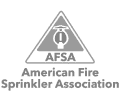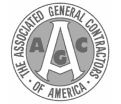Summer Fire Safety Tips for Industrial Facilities
Did you know that an average of 37,000 fires causing a billion dollars in losses occur yearly at U.S. industrial and manufacturing properties? Electrical overloads, human error, combustible materials, and insufficient preventative maintenance make industrial facilities susceptible to fire risks.
Of all the risks Houston-based production facilities face, fire can be the most devastating. That’s why every industrial facility manager must establish fire safety protocols that keep people and property safe throughout the year, especially during the summer heat.
Focus on Fire Prevention
A quick-spreading fire can threaten lives and level a building in less time than you might imagine. Even a minor fire can cause significant damage and disruption to operations, damaging critical equipment and utilities or blanketing a facility in debris.
Putting a summer fire prevention plan in place helps your business prevent losses and save lives. Here are a few things to consider to help protect your employees, visitors, and properties from fire damage:
- Inspect and maintain fire safety systems: Fire sprinklers, fire suppression systems, fire alarms, and fire extinguishers help prevent fires from turning into catastrophic losses. Professional inspections ensure each piece of equipment is operating correctly and identify problems for repair or replacement before a fire strikes.
- Display safety information: Maps of your facility and diagrams indicating hazardous materials locations, machinery, and fire safety equipment should be readily available and accessible.
Mitigate the Risks of Hot Work and Combustible Dust
The National Fire Protection Association estimates that fire departments respond to over 4,600 structure fires involving hot work like welding, cutting, soldering, and heat treatment each year. Of these, nearly 60% occurred in commercial properties.
To reduce the fire risks of hot work, it’s essential to keep heat-generating processes away from combustible materials like wood, plastic, insulation, cardboard, rags, and furnishings. Maintaining sufficient separation from flammable and combustible liquids or gases, like fuel, paint, and cleaning solvents is crucial. The NFPA recommends you protect vulnerable areas with welding pads, blankets, or curtains and move the hot work to a place free of combustibles.
Combustible dust is another leading threat in many industrial facilities. OSHA defines combustible dust as a solid material composed of distinct particles or pieces which present a fire hazard when suspended in the air. Combustible dust is dangerous because dust builds up everywhere and, under the right conditions, can cause a deadly explosion. Dust removal systems, regular inspections of confined or unused areas, and training employees on the risks can help mitigate a combustible dust incident.
Keep Equipment Updated
To avoid malfunction, you should routinely check fire safety equipment like sprinklers, alarms, extinguishers, suppression systems, and emergency lighting and signage. Be sure to maintain detailed records about all equipment inspections, maintenance, repairs, and replacements.
Store Chemicals Safely and Discard Hazardous Waste Properly
The Environmental Protection Agency and OSHA require safe chemical storage and proper disposal of hazardous waste at all commercial facilities. Hazardous chemicals that can cause hazards to life and property include:
- Flammable liquids, gases, and solids
- Explosives
- Oil-filled equipment
- Corrosive and radioactive substances
OSHA’s basic requirements for chemical storage include employee training on working with chemicals and supplying ready access to safety data sheets for each chemical. All chemical storage areas should be free from clutter and flammable conditions, and chemicals that cannot be stored together should be placed in separate locations.
Reinforce Your Emergency Action Plan
Developing and enforcing an emergency action plan ensures employees are aware of the procedures they must follow in the event of a fire. The plan should be prominently displayed throughout your facility and cover, among other things, emergency conditions, evacuation policies and procedures, and reporting mechanisms.
With over 35 years of experience in the fire protection industry, Kauffman Co. can help your greater Houston area industrial facility minimize fire dangers and identify potential threats.
To learn more about all the fire safety services we offer or to schedule fire protection maintenance or inspection, contact us online or call us at (713) 893-1090.
















